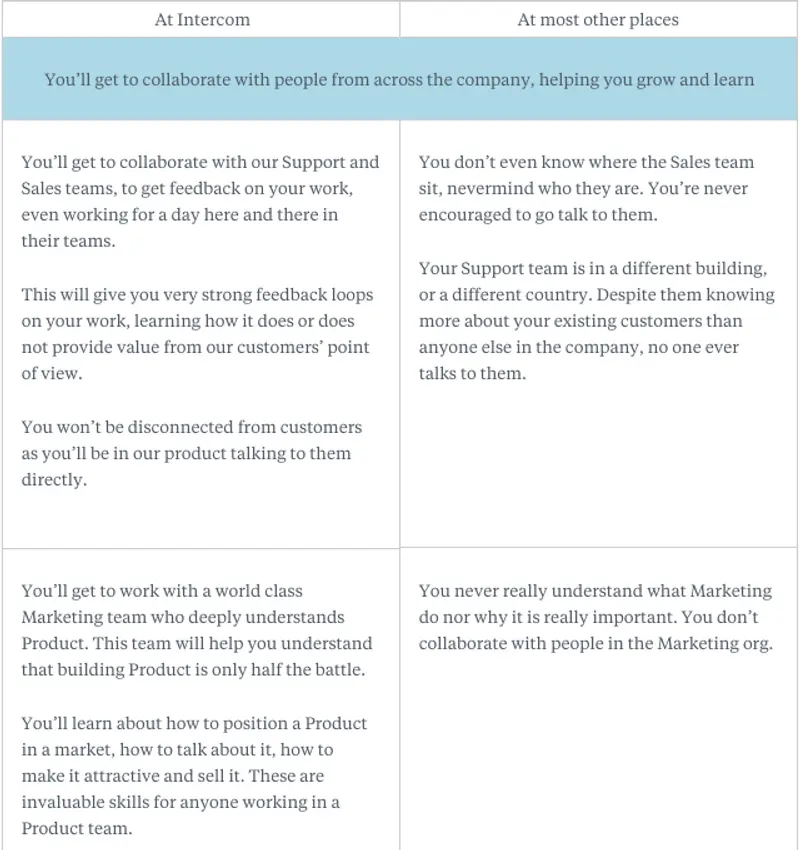
“As the success of business ventures become more and more dependent on attracting and retaining talented people, competition for high quality “knowledge workers” increases. Companies who focus on measuring what actually matters and empowering team members through ownership, transparency, growth, and collaboration have a competitive advantage.” – Peter Drucker
Cross-Functional Collaboration
Building cross-functional teams can be a daunting task. According to Harvard Business Review, 75% of cross-functional teams are dysfunctional. HBR points to one of 5 reasons for cross-functional teams failing, “1.) meeting a planned budget; 2.) staying on schedule; 3.) adhering to specifications; 4.) meeting customer expectations; and/or 5.) maintaining alignment with the company’s goals.”
Forming cross-functional collaboration can be as simple as embracing run-ins at the water cooler, 1-on-1s, weekly all-hands, etc. Your first inclination may be to look at this as a meddlesome distraction full of meetings that start 10 minutes late and end with no actionable next steps. In fact, it can be just the opposite if executed properly. When done right, they can elevate your business, product, and attracting talent.
Free Flow of Information
Building a strong team starts with trust. Building trust starts with open and honest communication. A lack of communication can be detrimental to any team. Peter Drucker, “the founder of modern management” goes as far to say, “Balancing change and continuity requires continuous work on information… Nothing disrupts continuity and corrupts relationships more than poor or unreliable information”.
When discussing best practices for creating cross-functional teams and alignment the CBS Moneywatch team says, “The best way to get these vectors aligned is to create a working climate in which mistakes and failures are viewed as learning experiences, not occasions for blame, and where every member feels included “in the loop”.
Alignment with Company Objectives
While it is important to have KPIs and goals for each individual team, it is equally important that these goals are aligned with the company objectives as a whole (see #5 above for why cross-functional teams fail). Employees can easily forget the role their work plays in the company’s overall vision. When teams come together from different units working towards the same goal it quickly builds a sense of clarity and purpose for each role.
Aligning company goals goes back to the “Free Flow of Information”. Managers and executives should be offering consistent feedback to their teams on their impact towards the company objectives. Additionally this can help “act as a reminder” to each employee and their overall impact to the business. In fact, WorkBoard has found that “72% of employees find their performance improves with more feedback”. Whether it be in-person discussions, a weekly KPI review, or a quick email Update, make sure to keep feedback consistent and regular to keep everyone moving in the same direction.
An Example from Intercom
As I’m sure a lot of you would agree, Intercom has built an incredibly strong product. After much trial and error the product team at Intercom recently published a post, “Make Sales & Product Meetings a Win-Win”, breaking down their winning recipe for aligning sales and product, “has elevated the bond between Sales and Product to new heights”.

When running a meeting, their sales team will present any feedback backed by data to the product team. From here, they open up discussion around the data and continue to build out their plans until their next meeting. In fact, Intercom has leveraged collaboration (image above) as one of their main recruiting tools for attracting talent.
Ready to Collaborate?
Attract talent and rally teams around company objectives using Visible. You just need a business email account to get started.




